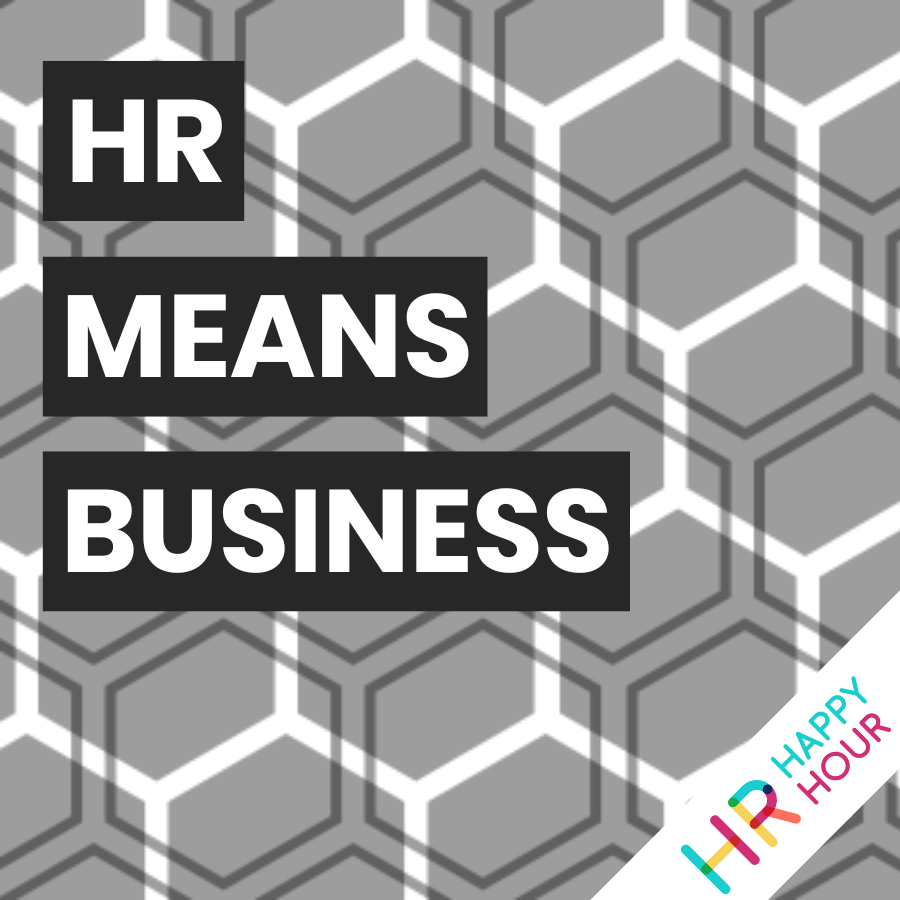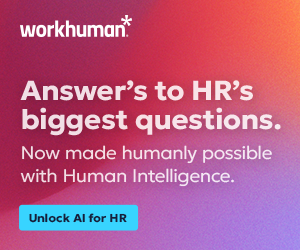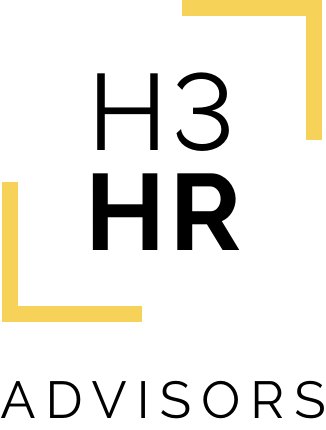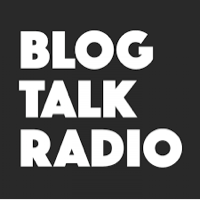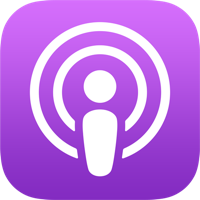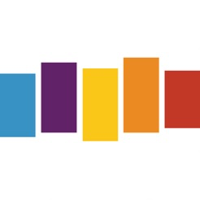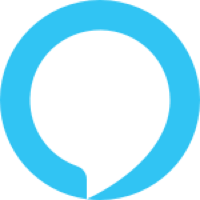HR Means Business 2 – Rethinking Our Approach to Work with a New Model for HR
Hosted by

Mervyn Dinnen
Analyst, Author, Commentator & Influencer
About this episode
HR Means Business 2 – Rethinking Our Approach to Work with a New Model for HR
Host: Mervyn Dinnen
Guest: Perry Timms, Founder and Chief Energy Officer, PTHR
In this episode Mervyn talks to Perry Timms, Chief Energy Officer of PTHR, two time author and the UKs most Influential thinker in HR about how the world of work has changed, and how we can embrace different approaches to work that promote creativity, maximising energy and productivity. Perry also offers his insights on how to use influence to bring leaders with you on the journey, and how he sees the new world of HR.
Thanks for listening! Remember to subscribe to all of the HR Happy Hour Media Network shows on your favorite podcast app!
Transcript follows:
Mervyn Dinnen 0:13
Hello and welcome to the latest episode of the HR Means Business podcast. Today I’m absolutely delighted to be able to talk to Perry Timms, somebody I have known for a number of years. A key person in the UK HR community. Perry is the Founder and Chief Energy Officer of the Consultancy PT HR. He is a two time author of two books published on Kogan page, the same publisher who’s published my two books. And he is we might refer to this in conversation. But in 2022, HR Magazine named him as HR’s most influential thinker. So I’m really looking forward to the chat today. And Perry, before I get you to talk, I just want to say that PT HR has just celebrated its 10th anniversary. And I remember 10 years ago, you and I, sitting in a bar in Manchester at the end of the CIPD conference, and you were talking about your left your last role, and you were looking to start a consultancy, that was very different, that would support HR in different ways, and would kind of embrace different approaches to work. And you’ve done it. So welcome to the show, Perry and tell us a little bit about yourself and the 10 years of PTA HR.
Perry Timms 1:34
Thank you, man. That’s great. Yeah, I love those kinds of flashbacks. And I mentioned it in our 10 year celebration party recently where I talked about the connected HR gathering that we had in the disused factory in South London somewhere. Yes, I think at the time of I was in the HR world, and I had seen some of the things that probably were coming down the line to test us and challenges. And inside a corporate organization, you can play with some of those. So you’ll know this about the kind of talent development aspirations and you’ve written about those really nicely. So I’ve done some of that. But there was only so much I could do inside one organization. And I just thought that I want to get my hands on something that’s a little bit bolder, and braver and more different. I researched and started to really get into things like self managed flat, non hierarchical organizations, and our good friend, Gareth Jones, was a kind of key antagonist in in helping me form into those thoughts. And I thought, wouldn’t it be nice if I could help companies do that liberate a little bit, you know, really give people a chance to find out who they were in their work. And that was the idea. But I mean, I had no idea whether that would be commercially viable or whatever. But I was, I was keen enough. And I wanted to learn more. And I just wanted to see if there were chances to kind of socialize work a bit more. And when you get your first gig, you kind of think, Oh, that’s great. And it might have been a bit of training or something like that. And then you start talking about things and people go, Oh, I’m interested in that, could we? Could we do that. So the network comes into play really strongly, because people kind of, I suppose relate to you in the sort of things you talk about and stand for. And lo and behold, I started to get some traction on ideas and work with companies. Sometimes it was about their use of social media tech inside the organization, sometimes it was a bit more radical. And it was about shifting the design of the organization. And it just built from there. Yeah, but 10 years ago, I had that little kind of inkling that I had a bigger part to play and shift in the world. And now it feels like that was well founded because the world shifted quite a lot in those seven years.
Mervyn Dinnen 3:42
It certainly has been 10 years from the gem of an idea to being the most influential. I mean, it’s, you’ve always been somebody that embraces different ways. I suppose it might start at the beginning, you founded a business, but you’ve set yourself up as the chief energy officer, not the owner, founder and chief executive, what was the thinking behind that?
Perry Timms 4:07
I liked the idea that I was renowned for my enthusiasm and my sort of almost boundless energy for the possibility. So it felt like it fitted with that, but I was quite discreet about it, because it was almost like a bit of a play. And it’s like, you’ve got to be semi serious about this, until I did some work with an HR team in a big ish retailer. And I used to go into those offices, and I would spend a day perhaps with the ER team or the recruitment team or the learning development team. And after a while, I said to the HR director there, I said, Look, I really like this. I said, because it’s quite random and it’s emergent. I said, but I walk out of it thinking, did I add any value there? And she said, Look, this is what happens. She said, you lift the levels of energy in those teams visibly for at least a week after you’ve been in she said so that’s what you are sort of transferring belief and experiment. I thought, well, the energy thing really fits then doesn’t it? So it’s that kind of thing. stuck. And I guess interestingly enough, I’ve kept that thought in my head. And when I got the chance to do that second book, which was the energized workplace, what I’d really seen is that people were flat out tired. And energy was a big issue. And people weren’t tabling it. And I thought, well, I’ve got the title, I might as well try and table it, and write a book around it and see what we can do to regenerate energy and people so that that bit fits it, I think.
Mervyn Dinnen 5:28
No, that’s great. And I must say, it’s an excellent book, I’ve read it. And as part of I suppose, recalibrating, you’ve embraced kind of different ways of working different approaches to working. I mean, obviously, now, there’s a lot of conversation around things like remote flexible working, which you were obviously doing a few years ago, there’s conversations around the move to a four day week, which is something that you embraced a few years ago. So what was the I suppose the thinking a few years ago to maybe investigate some of these changes, possibly helping HR people who are listening now thinking, I don’t know where to start with a change like this in the organization? How do I bring people with me? How do I, what would you say?
Perry Timms 6:12
Yeah, I mean, it’s a brilliant question, because I think we are trying to sort of tabulate a whole load of very conflicting and confusing issues. So if I start with the sort of construct of a team for a while, as an independent, I thought, I’m not even sure I trust myself to get enough revenue for me, let alone other people. But you’ll know this move, when you write a book, it can create some interest in what you do. And that created more inbound. So I thought, I’ve got to start bringing people in to help me out. And you might remember this in the sort of 2012-13 days, communities were all the rage, and I thought maybe, maybe that’s what I would do, I’d have a community of people. And I guess you’d call it an associate module. But it wasn’t quite deployable well enough in the spirit of the things I wanted to do. So I deliberately brought people into working with me. So the team is now 16 of us, there’s nine people who are regularly working with us on the sort of day to day stuff. And then we’ve got some experts and other adjacent people we bring in to make up 16. So with that, I start thinking about being true to my spirits of self managed and non hierarchical and inclusive nursing and all that kind of thing to set a framework for that. So you have to kind of say, look, I might be the owner. But that doesn’t mean to say that whatever I say goes. So you have to bring in open dialogic and challengeable ways of setting direction and who gets to work on what. And I would say that is a lovely way of saying to people, you step in where you want to where you feel you’ve got both strength, and perhaps a learning opportunity. But you can’t just do it without a system around it that helps you be fair to yourself, fair to your colleagues, all those sort of things. So we work really, really hard on the systems of work allocation, flow, responsibility, deadlines, measuring it.
Perry Timms 8:00
And I would say that one of the things I’ve seen in HR teams is they’re so busy, they’ve got so much coming at them and piled up, they almost have no idea about what they’ve got, and the systems they can use to tackle that work. So that’s one thing I would say is that system can become a really, really powerful way to hold everything together without people having to be micromanaged and overly sort of directed into doing what they’re doing. So that principle is kind of held right the way through. And that led to the other things that led to us thinking about remote and flexible operating, because a lot of people who I was interested in working with wanted smaller, more flexible parts of the week, rather than the whole thing. So we were very, very conscious in how we could design the role that they would do with the flow of the work and the demands of clients and all that kind of thing. So we did that very openly and collaboratively. And that helps because there’s, I guess the IKEA effect you’re building. You love it, you know, that kind of thing. Yeah. And the full day before day week, then that really, really came to mind when we had the COVID crash, quite literally a crash. We had a lovely quarter lined up, and then it just completely disappeared with COVID locked down. And everybody getting a little bit panicked and withdrawing back into stabilizing actions. I think so. So we said to ourselves as a team, what can we do? And one of the things we thought is, well, if people can’t commit to what they were before, maybe we need smaller versions of what we do second by just tiny chunks to help them in the circumstances they’re in. And we were going at that flat out and it was around about June time and I actually sort of said to the team in in a gathering on screen. I said I don’t know about you, but I’m knackered. I’m really tired like never before and I’m not traveling, but I can’t get the work to be as smart and sharp as I used to. I said so why don’t we think about taking a break, like in the week Stop for a day.
Perry Timms 10:02
And then we’ll, but don’t we need more hours on the clock forever than ever because of rescuing the business? I’m like, not if it’s rubbish that we’re pulling out. So we started a trial on a four day week. I’ve read some of the Andrew Barnes stuff from New Zealand. And I wanted the Wednesday and the team said, What about an end of week thing beginning a week thing? I said, Well, you know, what did we recommend? Let’s try the Wednesday first and see how we go. And within months, people were like, I love this midweek pause. It just suited me. So we kept it. But we needed to measure it as well. We wanted to see where we get in stacked out in those other days where clients go not on Wednesdays, you must be nuts. Clients were actually apologetic if they intruded on a Wednesday like, Oh, God, I forgot you’re not working, then. That was such a surprise. Yeah. And so we thought, well, let’s see, because we don’t want to like have massively long Mondays and Tuesdays and Thursdays and Fridays, and Wednesday feels like you’re just catching your breath. We got really sharp again, on those processes. We call meetings, we got smarter in how we used intelligent information sharing on Slack and using asana and stuff. Before we knew it, we had nipped and tucked and pruned and shaped things, that when we did a little read, sort of I suppose we circle back on the whole thing in November, we thought, wow, we’ve actually done more work in less time. And so that gave us the conviction to go stick with it. And that’s pretty much what we’ve done now.
Mervyn Dinnen 11:36
And it clearly works, because there’s a lot of accolades for the business. And you’re highly regarded. And I just think there will be HR people, hopefully listening to this conversation, who will say, God, that sounds brilliant, I’d love to do that. But you know, I’m in this big corporate I, you know, I’ve, I’ve got some latitude and flexibility in what I do in HR. But this is a step too far. How do I begin, you mentioned about measuring it and stuff? I mean, what advice would you give somebody who’s saying, How do I get started in something like this?
Perry Timms 12:10
Yeah. So if it is a four day week that you’re looking at, then absolutely has to be socialized. And everybody has to know that what’s being expected is not compressed days, not a cut in pay, but it’s the same amount of pay for the same impact that you have in better use of time. And if you can socialize that and get people to believe in that strongly enough, the next lever to pull on that is then. So what do we get rid of, because we’ve got crappy things that take time that we shouldn’t be doing, but we end up doing them because habitual ritual or whatever. And you can come up with a hit list of all the things you want to start I mean, meeting timer for a start, you can just go if we shave 20% of every meeting we had internally, we could probably claim a day. But you got to stick with it. You got to be responsible in how you do it. And also remember that you’re not in a vacuum, you got people in want, yes, certain times they arrest your business, right? So you can map it and go, when are we in demand for like l&d or recruitment campaigns if there’s a regularity to it. And if you find, for example, that on a Tuesday afternoon, bugger all happens, you could go boy, we could experiment with a shorter Tuesday, because we know people aren’t knocking on the door, and we can manage a skeletal service or something like that. So you got to be super sensible about the business that you’re in. And it’s not just devil may care and stuffing type thing. You know what I mean? But I think you’ve got to start somewhere. So start with socializing it see if there’s an appetite for it, start with the process coal, because that’s really what it is. But then think, okay, if we can do that with ourselves, what does that mean to the people who rely on us? And then it’s got to calibrate to that again. And if you can make those things work, experiment, and then see how it goes.
Mervyn Dinnen 13:58
Okay. The word influence appears a lot. So if somebody, there’s an HR manager or leader who’s thinking, I’m going to try that one of the I suppose areas they need to influence is not just the workforce. It’s the leaders. So what I mean, what’s your view, I suppose? What’s your advice for kind of influencing leaders? Because it might be that they need to trial this first themselves to see how it can work?
Perry Timms 14:27
Yeah, you’re absolutely right. And and of course, there’ll be thinking, maybe, well, I don’t want that because I like being here five days. That’s what I signed up to. And I wouldn’t think you’d have to force people to do it. But what you could say is, if you had time back, what would you do with it? And they’d say, I’d think more I’ve learned more or do more relationships, and it’s like, okay, so your version of it isn’t for days. It’s for days where you’re processing admin meetings, and a day or half a day here and there, where you’ve got that time back to do those things. I can’t see any leader going well, I don’t want that? So yeah, I think I think you can be sensible about how you trade it. Because like, I make no bones. On some of the days when I’m not working, I got my books out, and people go less work. And it’s like, it doesn’t feel like it and I want to do it. Do you don’t mean? Yes. So. So I do think there is an argument to say it doesn’t mean you have to stay at home pacing like a caged animal, because you’re not at work. I mean, I think Yeah, about that. So I sort of try and pull the levers that you think are going to work for them to deliver the same kind of outcome. Yeah, to use of the four days that you are with the other day, more innovation time, more networking time, whatever you want to do. That’s another way of compromising.
Mervyn Dinnen 15:41
Okay. In terms of bringing people with you on the journey, then that’s I suppose the leaders, you were fairly early adopters of a more kind of remote, flexible, hybrid, a synchronous way of working, which I understand the asynchronous bit because as you know, I co author reports and books, I live in London, our founders are different ages, so we don’t actually write at the same time all together. What what, how did you find it initially? And what I suppose were the not the pitfalls, but I mean, if you’re looking to, I suppose, instill much more of this kind of flexible approach? What are the two or three things you would advise people to look for? And really go for first?
Perry Timms 16:31
Yeah, I mean, I’m hoping the first one will will make your heart sing a bit more, because it talks to the digital side that you covered in digital talent, which is that you’ve got to get good with you at all, you have to really, really understand what tools are there to do, right. So we’ve very, very deliberately setting we don’t email each other internally, we can forward an email from a client, if that’s the easiest way to do it. However, we want to chat, make a decision, whatever, we will either thing, can that go on a slack thread. And we’ve been very specific about what our Slack threads are, they map to different areas of our business, it’s really logical and easy to understand, even if you’re brand new to us. So we use that we were very deliberate about, you know, screen time, like zoom time, and so on, because we were aware that it can be draining just to stare at screens and so on. So we were very deliberate about how do we optimize that we only needed to come together where it was co creation co decision making, right? So we kept that in mind. So we use Zoom sensibly. And we use things like mural, the post it note type board, Ida on. And people could pick that up whenever it suited them, we’d start it, we wouldn’t have to have a meeting about it, we could start a board, people could put comments on it whenever they wanted to, then we came together for a short period of time just to review what we had, and what the decision we needed to take with that was. And then crucially for the tasks. I mean, this is something that we really try and help clients with every task that we are up to not like just replying to an email saying, Here’s my bio, but everything that needs some degree of effort, we put it on our Asana project management application.
Perry Timms 18:09
So again, structured very, rigidly intensively, anytime we want, we can look at what anybody is up to. We’re not looking at it to find out when people are behind and shame them. But if they are, we can ping them a message and say, I see that hasn’t moved for a couple of days, do you need any help or whatever. But we measure it as well. So we know what we’re committed to. And if we’ve got more than we can do, we know that we can say I’ve looked at my work, and I’m up against it, can we create something where others can help out or we can shift priorities. So we’ve socialized the whole sense of work, but using tech cleverly, now that if you remote is vital, because you can’t have the side a desk conversation or the little let’s pop into a room for 10 minutes and work this out. You can’t do it. So those tech platforms have been absolutely vital. And we think now we are probably less distracted from our work because we’re remote. But we’ve built strong social time to learn together to chat when we need to share things that are going on in our life, like you know, the kids are ill or whatever. So it feels like you’re in the office, but it’s less distracting, less intrusive. Now I’d say that is not a second rate version of being in person. It’s a more intelligent and formalized way of being informed. That’s what I’d say.
Mervyn Dinnen 19:32
I think I get that I do get get that. So I suppose let me throw a question in. Given you are a leader in a people business. Have you ever suffered from I think the current term of popularities Have you ever suffered from productivity paranoia, your cleaners?
Perry Timms 19:50
Oh my goodness. I really love the phrase because I had all sorts of images pop into my head about panic and self doubt and stuff. So we’ve destigmatized up being up against it and struggling a bit and being at your depth a bit and getting lost in stuff and getting stuck in stuff. So to the point that we are very happy to declare, because we know it’s not going to be punished, that we don’t feel at our best. We’ve even created a few phrases where people say I just feel momentarily, like useless. You know, I mean, I’m distracted, and feeling a bit down and ill. And so we’ve actually codified it a little bit. And we don’t laugh at it in a flippant way. But we kind of go Oh, I know what you mean by that? Yeah. So I think I mean, it’s a really interesting phrase I’ve not really come across before, but I think we can get paranoid about whether we’re productive or not, and chase our tail and make more work to test whether we are or not, it’s like, you can feel this and sense this thing.
Mervyn Dinnen 20:47
That came from Microsoft, and it was about leaders, being paranoid that they’re people who are remote, are not being productive enough. Whereas the research showed that the people who are remote feeling they’re being much more productive than they are in an office location.
Perry Timms 21:08
I love that sort of polarity, then yeah, I’d say we’ve solved that by being very clear about productivity, meaning impact and relevance. And like, say, the social and the destigmatize version of it, we do do stuff like use a product called clarify where it tells us where our hours are being spent. And we do use very sensible kind of mechanisms for putting value to the work we’re doing. And at the minute, I’ll give you an example, actually, we are spending much more time on ourselves as in working out things we want to do and some research and so then we are even doing chargeable client work. So we’re like, oh, hang on a minute, there’s a bit of an imbalance there, because it’s surely it should be the other way around. Because that brings in the revenue and the other stuff is potential revenue. But we’re comfortable with it, because we’re, we’re seeing the shift, as in, it’s getting more towards client work, and so on. So yeah, I think you have to be really on it. And I think you have to be honest about it. And I think what we’ve got is that people feel compelled to share how they are not in a kind of overly like posturing way, but just in a sort of it feels like this to me, is that what’s going on here, we’ve had a quiet week this week because of half term. But we had a massively busy one the other week, and everybody went kaput. It’s like, they almost described it as sort of a bit frenetic and a bit, whatever. And it’s like, I guess we’re getting quite good at naming the mood, which helps you indicate the productivity sort of challenges. So yeah, I think we just tuck it into existence, rather than just guess whether we are or not. Yeah.
Mervyn Dinnen 22:37
Okay. Now, as you have been named in the UK as HR’s most influential thinker, you, you obviously need to have or should be having influential thoughts. I say that with tongue in cheek. But now I’d really love to get your take, I suppose over the upcoming year or two, where? Yeah, at the time that we are talking in the UK, we’re facing cost of living crisis. I know, other parts of the world are as well. There’s turmoil, there’s there’s uncertainty around in terms of the world of work. What would you I suppose yeah, are there two or three things that you think over the next year or two, we’ll kind of materialize will kind of maybe things will change in a certain way? Or? Yeah, how do you see it?
Perry Timms 23:26
That’s the $64 million question. And you’re absolutely right to ask it. And without any pressure of being in that position, I am thinking there is a sort of an obligation to justify it somehow. Right. But but I guess you and I both have had lots of conversations about things at the macro level in the future perspectives for quite some time, right? Yeah. So absolutely, I see that some of the things we’ve been talking about productivity and efficiency are absolutely where we need to focus because everybody’s got too much theory, and it’s much more complex than it was. So in order to do that, we have to be a lot more acutely aware of how we can re calibrate and re engineer processes and rituals and so on. So that consciousness I think is always going to be there. And I think what I see is people spending a lot of time in areas where they’re just over capacity, so they haven’t got any space at all to do improvements or strategic thinking or so on and that’s just causing a vicious cycle of never getting out of it. So so a bit of a prediction, I guess I’d say is that we’ve got to name capacity as an issue and tackle it not just say we’re so busy or whatever we’ve got to go capacity is our challenge we’ve got to create some capacity and and socialize it and aggregate it and I think that then gives you the headspace to then go right now what do we do to stop us keeping falling back into this track of cycles of busy, busy, busy or on top of it for a bit all busy, busy, busy, that’s not good for anybody. So I have been thinking about a couple of things. One is is the value that we’re creating, I think we need to be absolutely brutal about whether the things we’re doing in HR are creating value, or whether they’re tendering a whim or a machine or whatever. So, get critical about value creation, value mapping streams, whatever it is, because I think there are things we do that we think create value, but we never test it. And if we test it, and it doesn’t, we will just stop doing it, we’ll do it differently.
Perry Timms 25:23
So there’s that. And then that’s led me to and it’s fact it’s very pertinent, because this year have come up with a new model. For HR, I think we’ve got, we’ve got to depart from where we are now. And most of where we are now is still in three pillars of business partners Center of Excellence, shared service, or read type model, right? I’m seeing four interlocking circles. And I’m seeing a big shift in how we arrange people within those. So this is big reveal. I think we need people who look at HR services as products, and we have product managers, I think that’s what got to get because they will look at the value there look at the efficiency and optimization, they’ve got to build a product that’s worth paying for if you have to, I then think we’ve got to have systems designers who say, well, those products don’t sit in a vacuum. So what’s the systems we need that people access them and use them and the whole machinery of this organization works to so OD and everything associated with it. But then I think the two things are really, really thinking we need and we’ve been talking about for too long, but we need to stop the roundabout and do it now. Performance and data analysts absolutely recruit them, procreate a unit of them, and absolutely go mad on that. Because I think there are business areas that aren’t as efficient as they should be, but they think they are and we should show them where they’re not. And we should then show the value we add by making them more efficient. And then the other thing is psychologists and science and evidence, we need people who are trained in the art of understand organizational social, psychological practices, and that they can use evidence to go to the board, say, you’re creating disengagement that’s costing us this much money, you need to change what you do here. Otherwise, we’re lost. So that that’s part of the kind of new model that I’m thinking we absolutely need to not just talk about these roles, bring them in, start them, you know, hire people into them, or skill people up to them. And that I think will help us get over the line, because I think we need to be much more of that. And less of the kind of models we’ve had for about 25 years.
Mervyn Dinnen 27:30
Wow. A new model for HR. I suppose if I wrap up the the first thing I think of listening to you outline that is the fact that we need to re skill. Yeah, cause thinking of the way many HR teams are structured need probably, you know, isn’t around those core capabilities and knowledge areas. And so that would either bring in expertise, or it is that we need to effectively rescale ourselves to understand, you know, to be able to embrace more of an approach like that. Are you are you seeing or as final question, are you seeing organizations going about this in terms of kind of, you know, do you see HR teams who are really into kind of rescaling themselves and furthering their knowledge and understanding.
Perry Timms 28:23
So a bit like the William Gibson quote about the future is here, it’s just dispersed, right? I am seeing it in part. So in a bank, they’re learning to look at their stuff as products and they’re getting great traction on it. In another area. I’m seeing an obsession with systems design, and they’re getting traction on it in another area. I’m seeing strong psychology and evidence based input and but it’s not together yet. Yeah, so you’re absolutely right, there are people rescaling in certain areas. And I think what we need is probably some kind of galvanizing coalescing thing that urges people to start to do that, where it matters most in their organization. Now, if I’m predicting how long it takes somebody if you’re a big global organization, I think this is probably nearly a two year program from end to end. But if you’re a little bit tidier and more compact, you could probably do it in under six months recruit or skill up in psychology and data analytics and Performance Analytics, get the product mentality and get the systems designers in both. So I am making it sound easier than it absolutely is because we’ve got a lot of work to do as well, but I think we’re never gonna get out of this trap.
Mervyn Dinnen 29:25
Wow. Lots to think on there. Perry Timms, Chief Energy Officer of PT, HR and HR’s most influential thinker in the UK for 2022. It’s been an absolute pleasure to talk to you today and let people know where they can contact you on kind of you know, Twitter, LinkedIn, what’s your channel?
Perry Timms 29:46
So LinkedIn seems to be the sort of the most traction of late someone there of course at Perry Timms on Twitter website is PT HR dot code at UK and if you’ve popped me into a YouTube search, you’ll see a few little talks and stuff on there as eell and Kogan page for the books of course.
Mervyn Dinnen 30:02
Of course. Perry, thank you for your time. Some great stuff to think on there and hopefully we’ll chat again and hopefully people will listen to this and contact you.
Perry Timms 30:14
Thank you. Loved it. Brilliant.
Mervyn Dinnen 30:16
Good luck with you. Thank you
Transcribed by https://otter.ai
Talk to us
If you want to know more about any aspect of HR Happy Hour Media Network, or if you want to find out more about a show topic, then get in touch.

